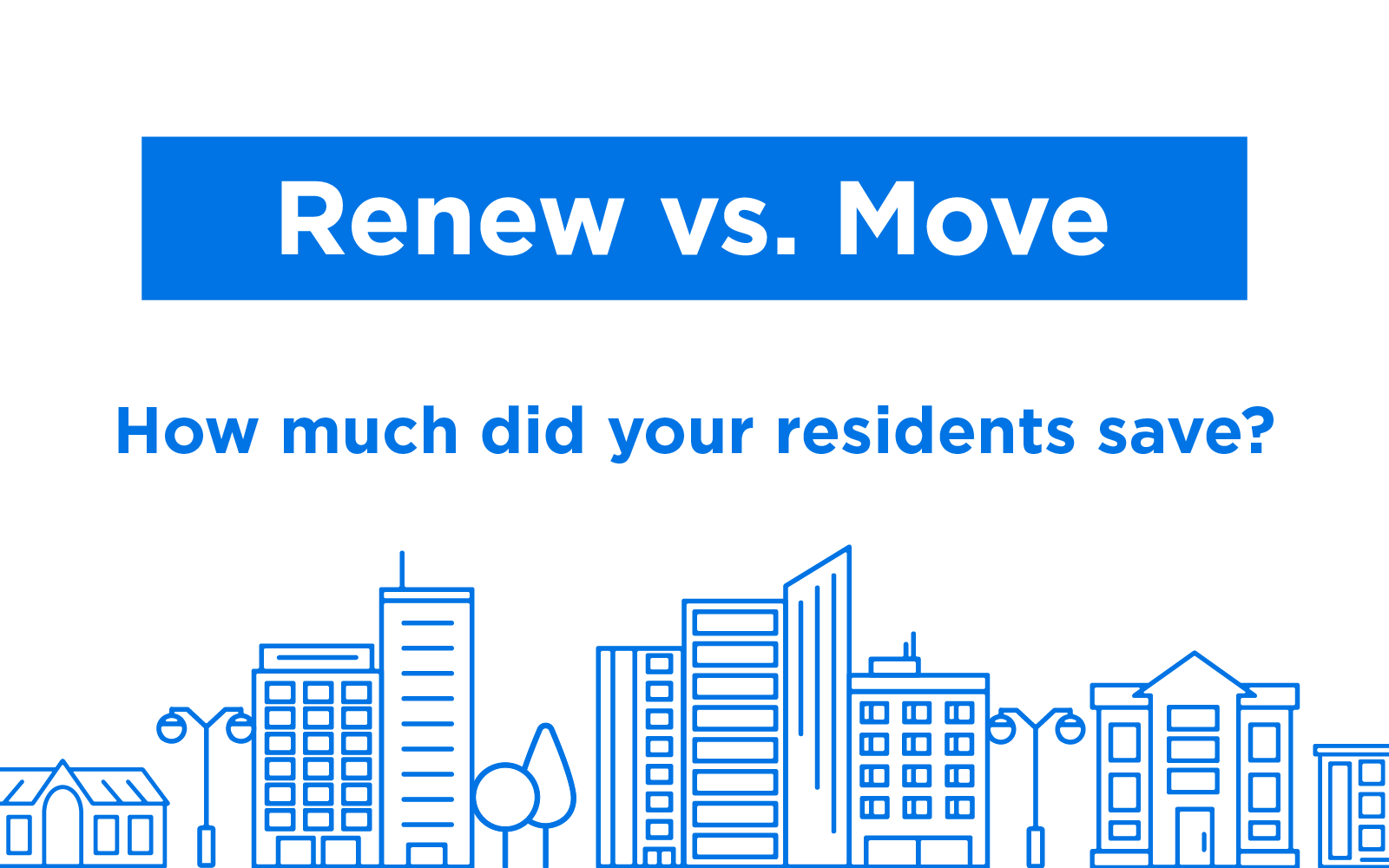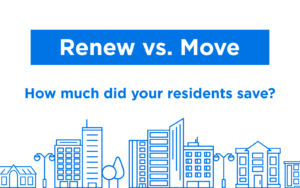Renewals Are a Win-Win for Property Managers and Residents

August 23, 2017
5 min read
 Whether you’re located in a fast-moving market with tons of new supply or a community that moves at a slower pace, retention is a likely big part of your leasing strategy.
Whether you’re located in a fast-moving market with tons of new supply or a community that moves at a slower pace, retention is a likely big part of your leasing strategy.
Retention allows for a steady stream of revenue and a bump to your NOI when you renew current residents’ leases with a rent increase. Not to mention, turning a unit is expensive.
Between vacancy loss, cleaning, maintenance and marketing costs, the price tag of a turn can range anywhere from a few hundred dollars to upward of $3,000 – and that’s if the rental is in decent condition!
Renewing current residents’ leases isn’t just good for your bottom line. Turns out, renewing is good for your residents’ wallets too.
A new Zillow analysis of rent data from 2015, the most current data available in the U.S. Census American Community Survey, found that renters who moved in the past year paid nearly $4,000 more in rent than renters who stayed in the same unit for five or more years.
'Renters have a decision to make almost every year – do they stay in the same place, or should they look for a new unit?' Zillow Chief Economist Dr. Svenja Gudell said.
'With the country in the middle of an affordability crisis, it's important for renters to understand how much they can save if they renew their lease instead of finding a new rental. Nationally, rental rates have slowed and the savings from renewing are not as significant for renters today. However, in some of the hottest rental markets, where rents are still rising aggressively, continually renewing a lease can mean saving thousands of dollars.”
Find out how much renters save by renewing in your market.
Cost savings and customer service tactics for retention
Messaging cost savings to renters to renew is part of Chris Crampton’s retention tactics. As a regional manager for Konover Residential Corporation, a “boutique management firm,” Crampton includes information about the cost of moving in the first renewal offer to a resident, which is typically sent 120 days out.
He always makes sure the offer is personal: “We don’t do blanket renewal offers.” And, he uses food as an incentive.
“You’d be amazed at what a bag of M&Ms can do,” he said. “Food is a trigger for most people. So, that initial offer goes with a bag of M&Ms and says ‘management and maintenance appreciate you.’ An extra touch goes a long way.”
Konover’s management philosophy revolves around the “three Cs: curb appeal, customer service and consistency.”
For Crampton and his teams, that means a personal level of service and an outstanding experience that starts the moment someone comes in to look for an apartment. That’s also the moment when retention starts.
“First impressions are everything,” he said. “We want to make sure the resident knows that they mean the world to us.”
In addition, his retention efforts focus on making move-in day as stress free as possible, personalized service and events. He also manages his residents’ expectations by making sure they fully understand their lease, which is especially important for first-time renters.
“They need to be educated,” he said. “They need to know what their responsibilities are, what their rights are … this is what we do for you as a renter, and these are your responsibilities.”
The right mix of new leases and renewals
Of course, you’ll never get 100 percent of residents to stay, no matter what a property manager does. Lives and circumstances changes. People move.
Nationally, the average retention rate has hovered around 50 percent for several years. Crampton says his residents typically stay between two to four years.
In previous positions and in pervious cycles, Crampton aimed for the 50 percent renewal rate too. However, now his goal is to renew between 55 and 65 percent of leases with at least a 3-4 percent rent increase.
Bill Nye, vice president of operations for Berger Rental Communities, has a similar strategy for renewals. He calls it the “60/40 formula for success.”
Nye wants his teams to renew 60 percent of leases, which is better than the national average, and close 40 percent of “traffic” or prospects. And traffic should be 3 percent of unit counts in tours.
So, if a community has 300 apartments, that means there should be nine tours a week, and the leasing team should close on 40 percent of those tours consistently throughout the year.
“It comes out to be over 100 percent,” because, Nye said, “you’re always going to have skips, evictions and unforeseen issues. I’ve used this for benchmark for years and years, it’s never failed me.”
When retention means better credit
Danielle Johnson, marketing and training director for Bridge Property Management, said that her teams aim for renewals at their communities with a more value-add perspective.
In addition to more traditional retention strategies like events, Bridge looks to keep residents happy and in their homes through their Bridge Credit Plus program which helps residents improve their credit score.
With each month’s rent, a resident can opt to pay an additional $5.95; Bridge then reports their on-time rent payment to the credit bureaus. The program is available to all Bridge residents, and “we’ve had people who have had really great results doing so,” Johnson said.
But even with events, personalized messages, food and extra offerings, what is at the heart of retention is good old-fashioned customer service, Johnson shared.
“The office team is 1,000 percent important to retention,” she said. “When I teach, I teach that this is someone’s home. This is where they come after a good day or a bad day. They need to feel comfortable. Our teams need to push customer service so much harder than any other experience. We’re their home. If you have those relationships, your residents are going to want to stay.”
Click to find out how much renters save by renewing in your market.
Related resources:
Connect with us!
Learn how Zillow Rentals can help you reach your goals.
Stay informed. Stay ahead.
Access exclusive industry insights, market trends, and expert tips. Subscribe now to receive quarterly Zillow Rentals newsletters!